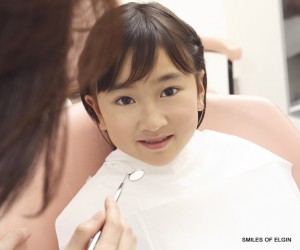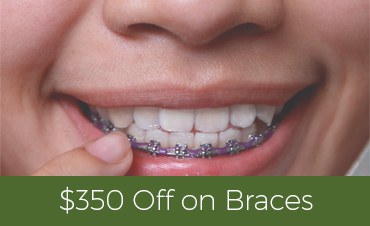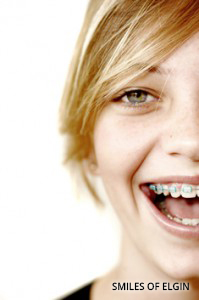1209 Dundee Avenue Elgin, IL 60120
Braces for Children
Many children are not very excited about getting braces. They like the idea of straight beautiful teeth and smile, but on the other hand they are nervous about whether the braces will cause pain and discomfort.
The placement of orthodontic braces is not at all painful, and the end result will be a beautiful straight smile. It would be good to talk to your child about this and to ensure them how beneficial the treatment will be.
Although patients of any age can benefit from orthodontic braces, they tend to work much quicker on pre-teens and teenagers (the best would be before puberty) since they are still experiencing jaw growth. The American Association of Orthodontists (AAO) recommends that children should first see an orthodontist around the age of seven.

What Causes Misalignment of Teeth?
Poorly aligned teeth often cause problems speaking, biting and chewing functions. Most irregularities are genetic or occur as a result of developmental issues. Some malocclusions are acquired by certain habits and behaviors such as:
- Mouth breathing
- Thumb or finger sucking
- Prolonged pacifier use
- Poor oral hygiene
- Poor nutrition

What’s involved when a child gets braces?
The orthodontist performs a visual examination of the child’s teeth. This will be accompanied by panoramic x-rays, study models and computer generated images of the head and neck. These assessments are known as the “planning phase” and they help the orthodontist in making a diagnosis and planning the most effective treatment.
In many cases, the orthodontist will recommend “fixed” orthodontic braces for a child. Fixed braces cannot be lost, forgotten or removed at will, and it means that treatment is completed more quickly. Removable appliances may also be applied and they are generally used to treat various types of defects.
Main Types of Orthodontic Appliance for Children
Fixed braces– Braces are made of brackets which are bonded to each individual tooth, and an archwire which connect the brackets. The brackets are usually made of metal, ceramic, or a clear synthetic material. After braces have been applied, the child will have regular appointments to have the braces adjusted by the orthodontist. Orthodontic elastic bands are often added to the braces to aid in the movement of specific teeth.

Headgear – This type of appliance is most useful to treat developmental irregularities. A headgear is intended to be worn for 12-20 hours each day and must be worn as recommended in order to achieve good results.
Retainers – Retainers are typically used in retention phase. When the original malocclusion has been treated with braces, it is essential that the teeth do not shift back to the original misalignment. Wearing a retainer ensures the teeth maintain their proper alignment and allows the jawbone time to stabilize.
Office Hours
| Monday | 10:00 to 6:00 |
| Tuesday | 10:00 to 6:00 |
| Wednesday | 11:00 to 8:00 |
| Thursday | 10:00 to 6:00 |
| Friday | 10:00 to 6:00 |
| Saturday | 8:00 to 3:00 |
| Sunday | Appointment only |



Recent Comments